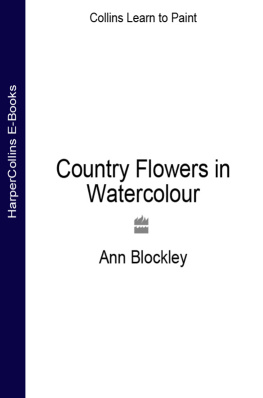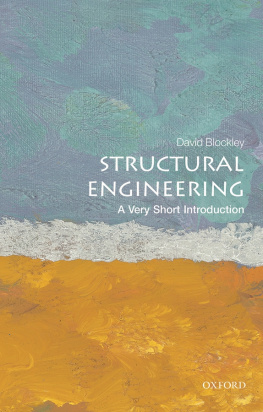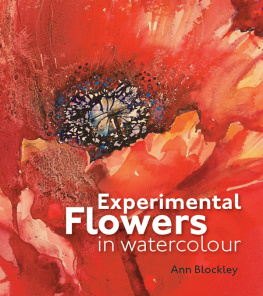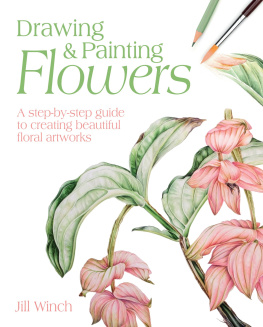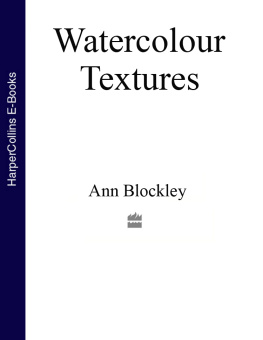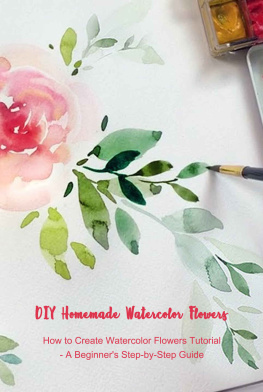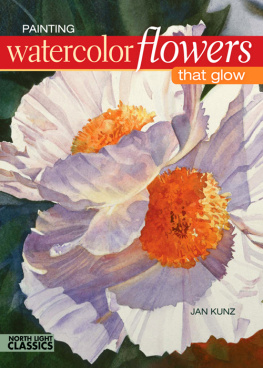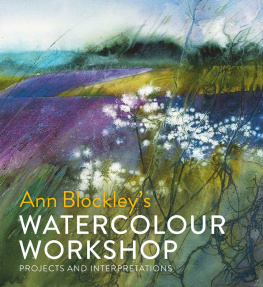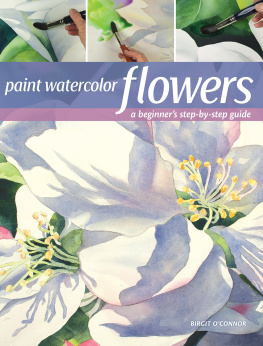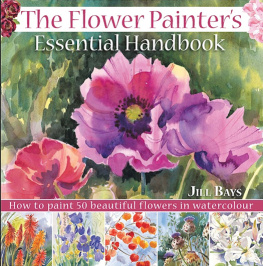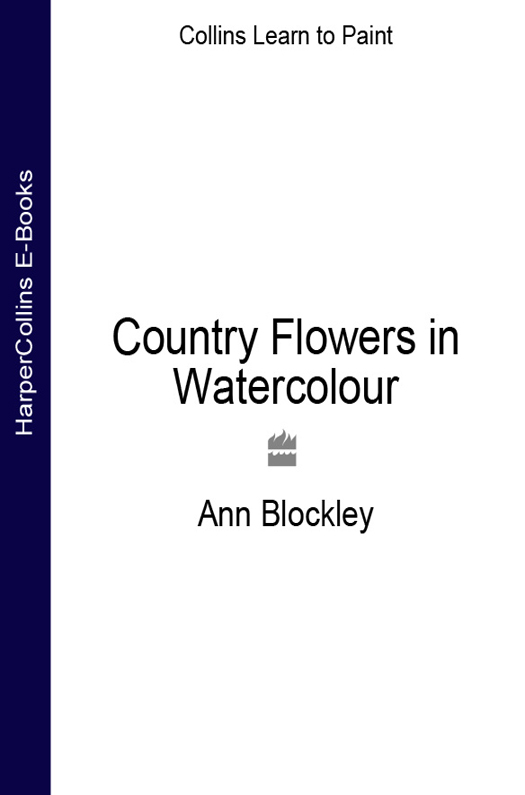Contents

A nn Blockley was born in Lancashire, where she spent the early years of her life. She moved with her family to the Cotswolds in 1975 when her late father, the painter G John Blockley, opened a gallery in Stow-on-the-Wold.
As a child, Ann was constantly painting and drawing but also enjoyed writing. After leaving school, she studied design and illustration at Gloucestershire College of Art and Design, and later at Brighton Polytechnic. After graduating with a BA Honours Degree in Illustration, Ann launched straight into a successful and varied career as a freelance illustrator, working on many commissions for well-known companies. These included designs for greeting cards, tableware and tapestries, illustrations for educational and childrens books, images for packaging on everything from chocolate wrappers to shampoo bottles, and even a set of postage stamp designs for the Royal Mail.

Ann Blockley in her cottage garden with her dog, Mole.
Countryside inspiration
Anns style of painting was highly detailed and decorative for her commercial work but she was developing another, quite different and more personal style of using watercolour. Subjects for her own paintings were taken from the woods and fields surrounding the country cottage she still lives in with her husband and two children, and her paintings began to feature the poultry and pigs the family reared and the flowers Ann grew around the cottage.
Anns father, who had written many painting books including Learn to Paint Pastels for HarperCollins, suggested that she too might write for them. The idea for a book about painting the countryside emerged and the result was Anns first Learn to Paint book: Learn to Paint the Countryside. Since then she has written five books including Flower Painting Through the Seasons and has made a video with the same title to demonstrate her painting ideas and unorthodox approach to watercolour.
Anns career as a painter has blossomed and she has exhibited widely in many solo exhibitions, with buyers from all over the world collecting her work. She is a regular contributor to Leisure Painter magazine and also enjoys teaching, sharing her techniques and passion for painting country flowers with the wide range of students who visit the workshops that she and her husband run. Much of Anns time is spent walking through the countryside and visiting local gardens or country markets to find new subjects and sources of inspiration to share with her pupils. The aim of her workshops is not only to teach painting techniques but also to open her students eyes to painting possibilities and help them to look at simple country subjects with a painterly eye. Learn to Paint Country Flowers in Watercolour continues this theme.

Delphiniums and Poppy
70 56 cm (28 22 in)

I use my sketches and photographs I have taken as reference material, but also work directly from nature. Be prepared to use a little imagination when painting backgrounds, to create the effect of the outdoors.
F lower painting is a magical and evocative subject that is accessible to everyone. The title of this book Country Flowers in Watercolour was chosen to include not only the wild flowers of the countryside but also traditional cottage garden flowers. These subjects evoke an air of romance and atmosphere which is an aspect I hope to encourage you to explore.
Watercolour can be subtle or vibrant, simple or complex. You can apply it with traditional juicy washes, or play around with a variety of exciting textures and brushstrokes. The following pages show you how to explore these techniques for yourself.
Do spend plenty of time practising the basic washes these are the building blocks of all watercolour painting. A flowing wash may not be easy at first but perfection is not a prerequisite for an interesting and expressive painting. You will achieve far more by being relaxed, enjoying yourself and accepting that mistakes may occur, than by being worried and timid with the paint.
The emphasis of the book is on loose, painterly work and not detailed, botanical illustration. I want to encourage you to look at flowers in new ways and to develop your own creativity using watercolour. This is a wonderful choice of medium for painting flowers its translucency can capture the very essence of delicate petals.
At the end of the book, the demonstration section takes you through complete paintings step-by-step to help you to understand the planning process. I hope that, after studying these carefully, you will enjoy applying the principles to your own painting ideas.

Lavatera
30 23 cm (12 9 in)
W hen learning to paint, very few materials are required. A palette and a brush, some paper, water and a few colours are all you really need to get started. The less equipment you have to juggle with, the more you will be able to concentrate on getting to grips with new techniques. As your skills and confidence grow, you can experiment with a wider variety of colours, paper surfaces and different sizes and shapes of brush. However, it is worth remembering that time and money spent purchasing new materials is no substitute for plenty of practice!

Your palette will reflect your painting style and personality. Mine is a bit disorganised but at least it looks interesting! Choose a large palette with separate compartments for squeezing on paint and mixing your colours.

Good brushes are vital. Shown here are (from the left to right): 2.5cm (1 in) flat, size 14 round, 6 mm ( inch) angled, and a size 4 round. The angled brush isnt essential but is great fun for painting into corners and up to edges. The paper is Waterford (on top) and Bockingford (underneath).
Brushes
The brush is your main painting tool and it needs to hold plenty of paint, keep a sharp point or edge and be sensitive to a range of movements. All these requirements are a tall order for the old hoghair brushes found in attics or the ones borrowed from your childrens paintbox!
Sable is traditionally the favourite choice for watercolour brushes. These are wonderful to use but they are expensive. I find that art brushes made from a blend of synthetic fibres and sable are more economical, perform effectively and actually last longer.
The most important brush for my style of work is one that is suitable for painting large background washes. I use either a flat brush, at least 2.5cm (1 in) wide , or a round brush, at least size 14. The point of a decent large round brush will also allow you to paint details far better than a cheaper, fluffy-ended small brush.

